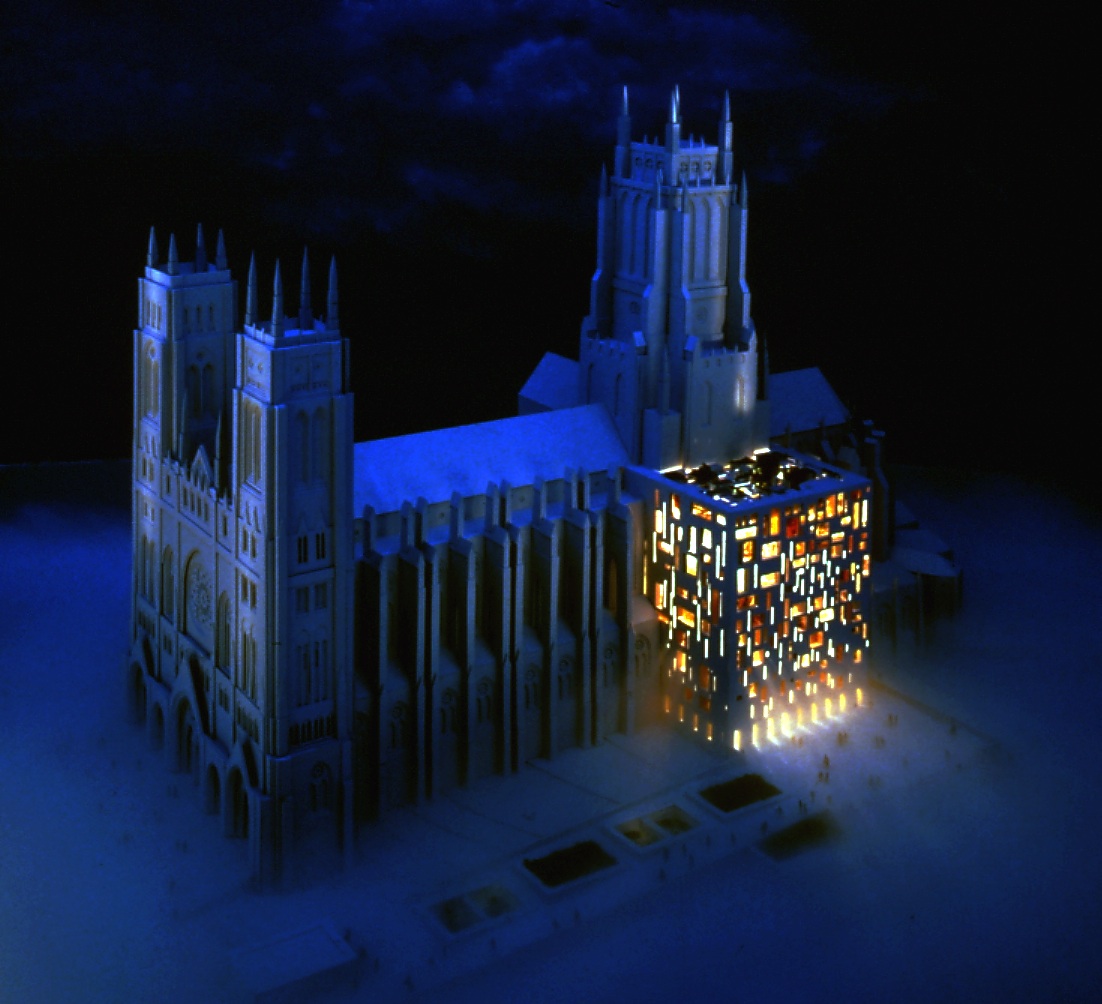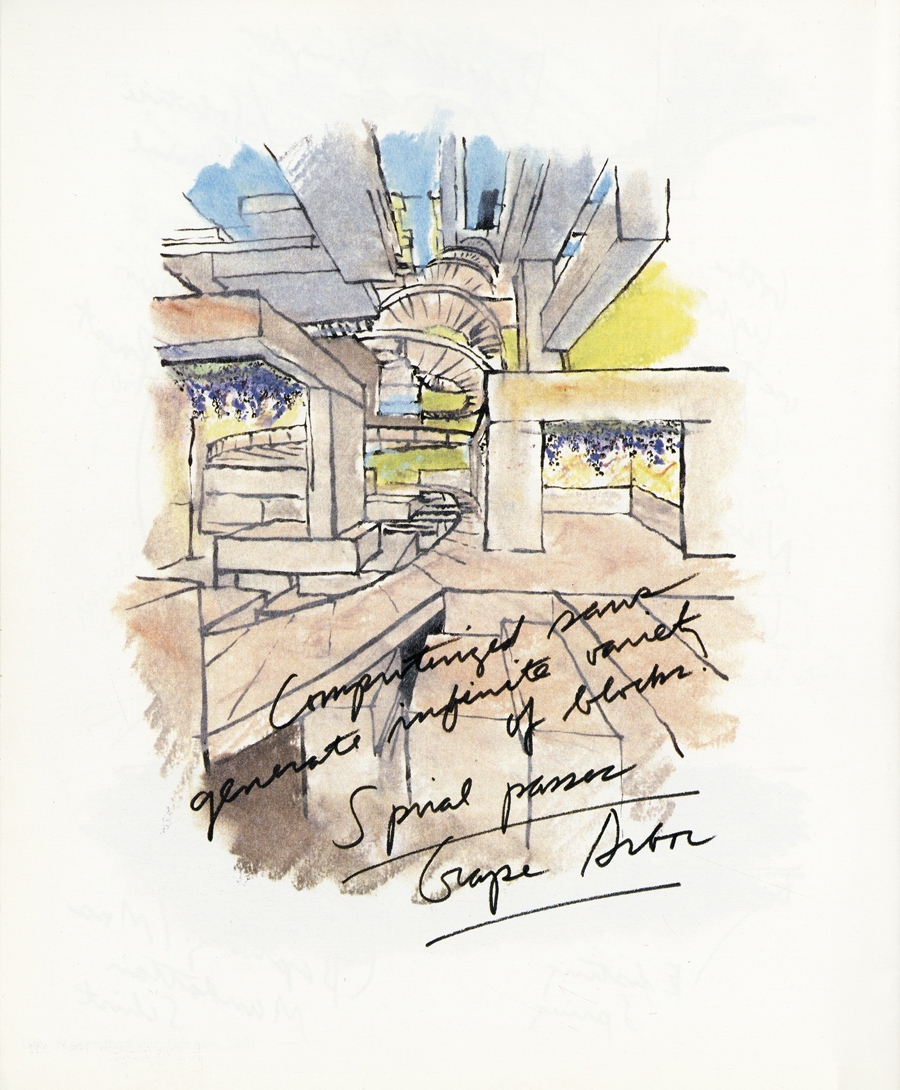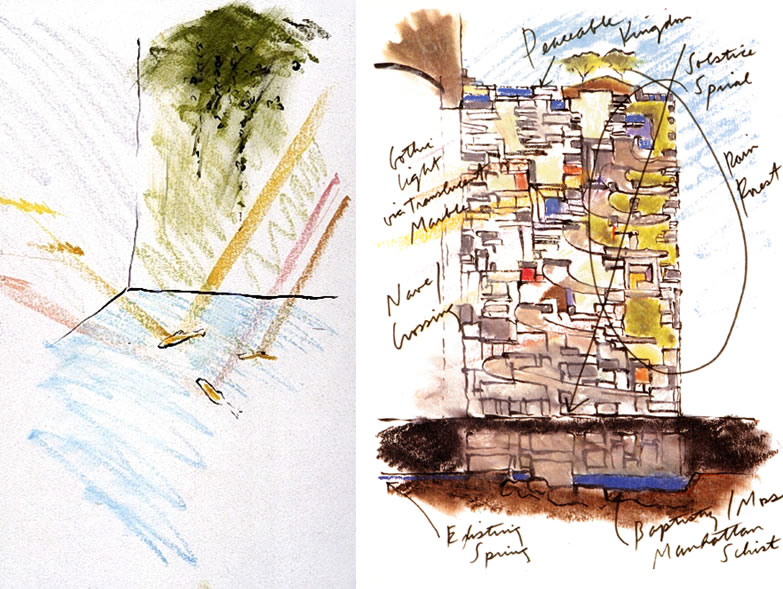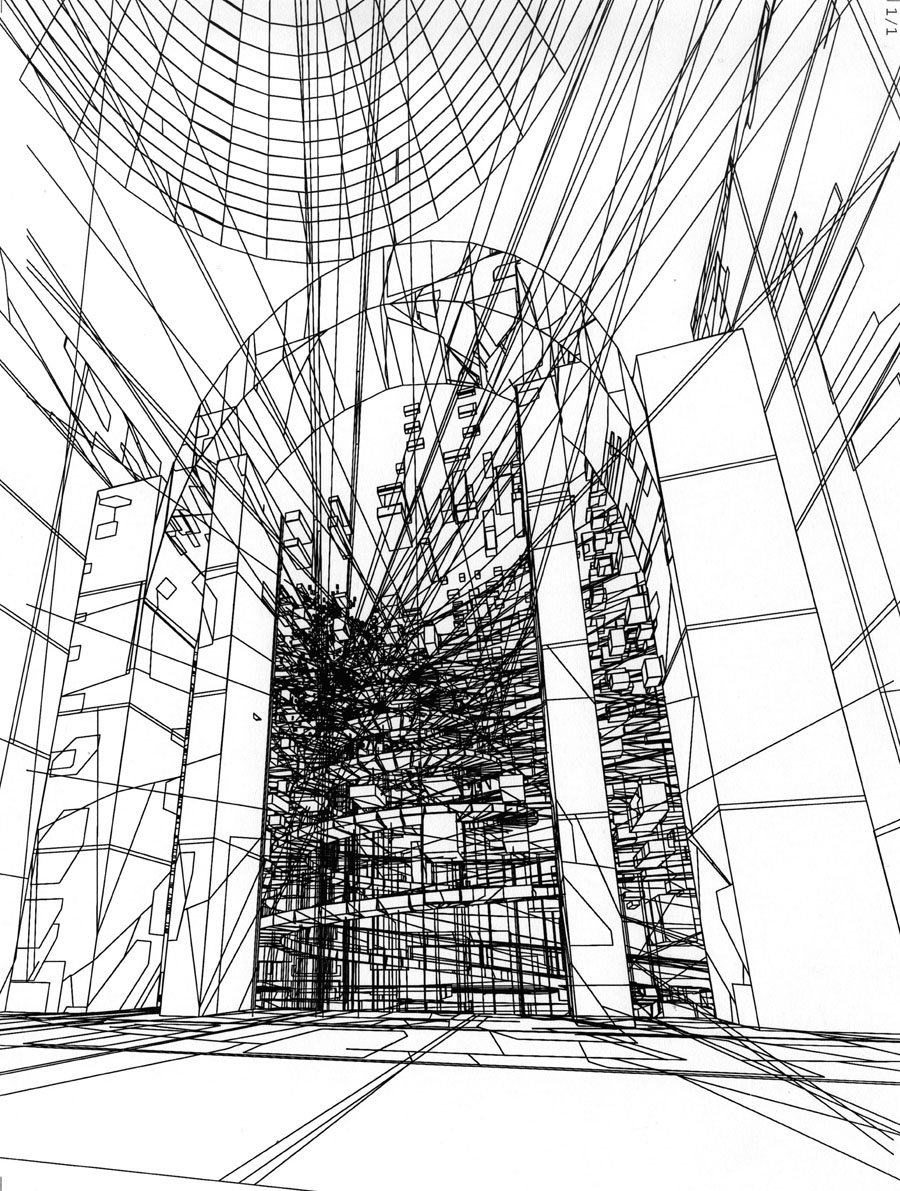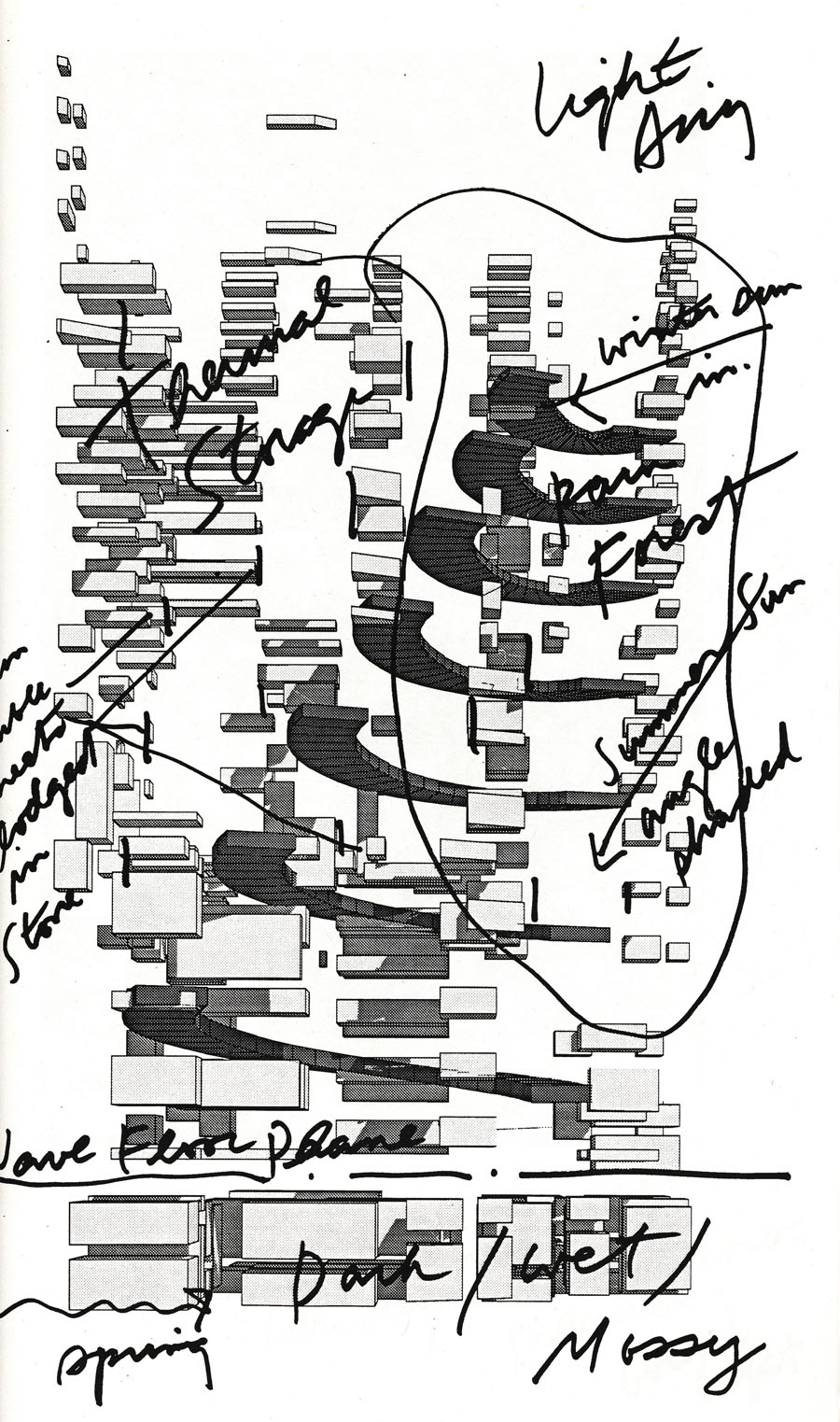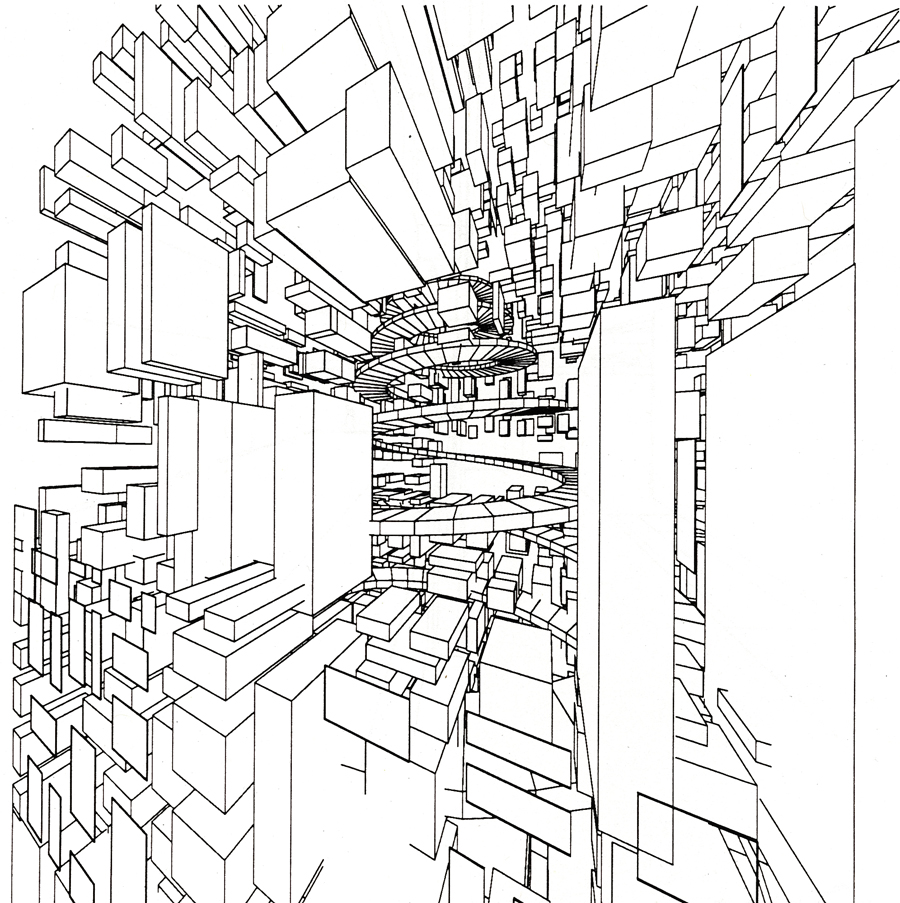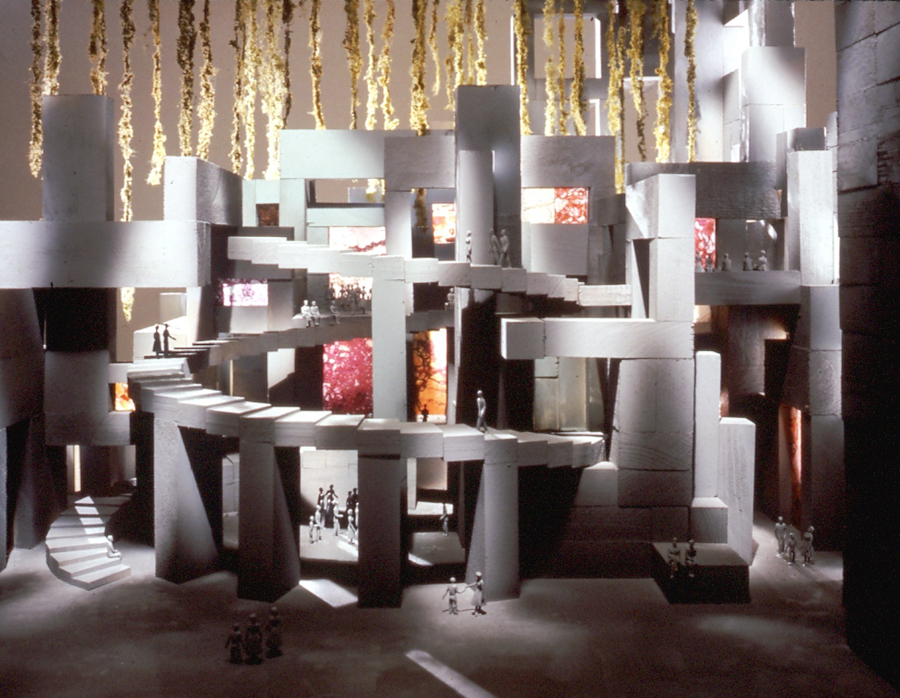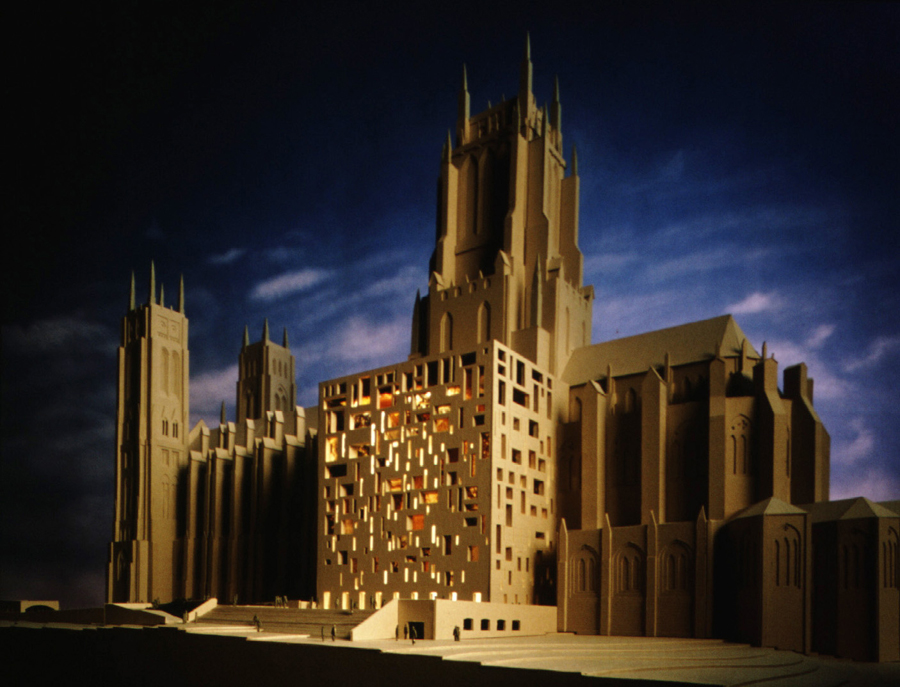CATHEDRAL CHURCH OF ST. JOHN THE DIVINE New York City, New York Design Competition 1991 A limited, invited competition for the new south transept of the Cathedral Church of St. John the Divine in New York, the Rene Dubois Bioshelter proposes a protected environment The observation of nature yields the DNA for making an architecture of divine presence. The intersection of organic geometries with the sacred numbers of the Christian tradition creates a spatial matrix from which to construct the new south transept, an inhabitable kaleidoscope of solid and The sacred numbers determine the size and shapes of the blocks of the new stone mountain. Conceived as a solid with myriad divisions with the envelope of the transept these numerological blocks were then "exploded," creating an interstitial realm. A spiral is then carved through this matrix along a tilted axis that aligns with the high noon summer solstice in Manhattan. Sectionally, the spatial development starts from the rooted bedrock which metamorphoses into the stone of the building. Given the numerological proportioning, the heaviest blocks fall to the bottom while the lightest blocks at the top form the more open part of the matrix, allowing the light to enter and filter down, creating a dreamlike and sequestered sense in the lower level, musty, with the smell of censers, like a Gothic cathedral. Cut into the bedrock at the very base of the transept is a new baptistry which utilizes a spring, which is currently capped, under the crossing of the cathedral. The water is released and flows along the strata of the Manhattan schist to fill the baptistry and to introduce a groundwater source into the building's passive energy system. The south transept allows the ascent into the light from the crossing of the cathedral. Moving toward the light along the carved spiral ramp, chapels and gardens illuminated by translucent sheets of marble lodged in the stone matrix throughout the ascent give spiritual and liturgical intention to
|
| PROJECTS | TEACHING | CONTACT |
